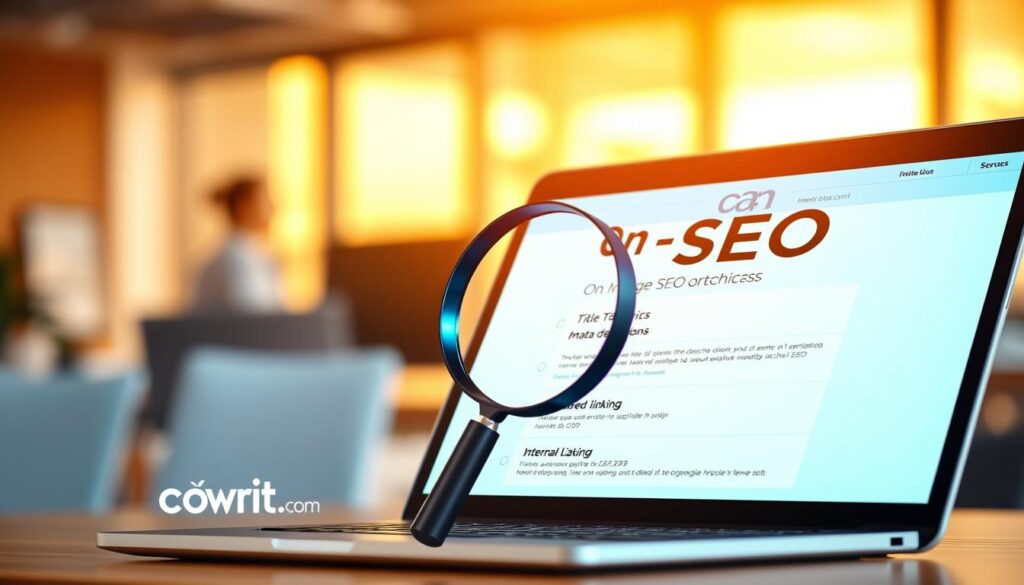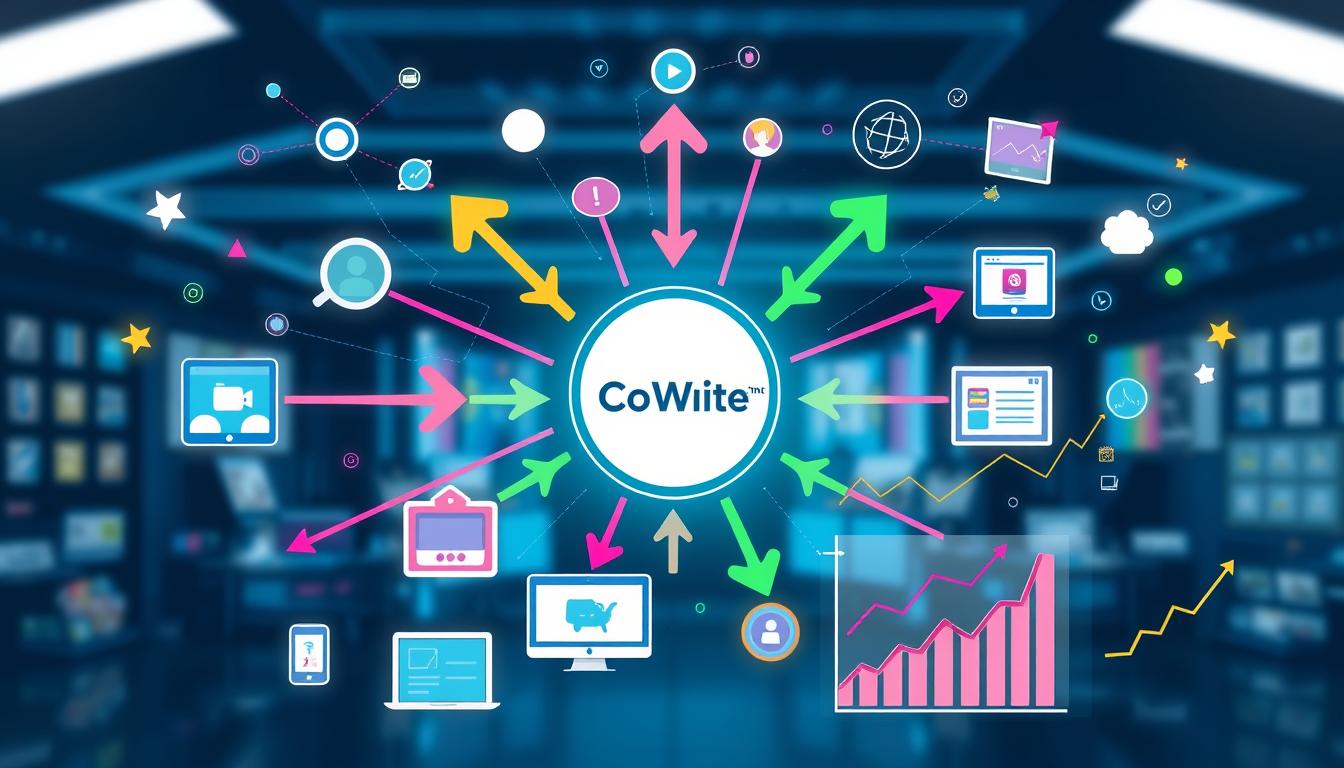Getting people to visit your online platform without spending money is key to lasting success online. When you get visitors through search engines, not ads, that’s called organic traffic. This kind of traffic saves money and makes your site more credible.
By working on organic traffic growth, you can build a strong online presence. This attracts and keeps your target audience interested. If you need help making your content engaging, think about reaching out to a professional content writing team via WhatsApp Call or Chat.
Key Takeaways
- Organic traffic is a cost-effective way to drive visitors to your online platform.
- It boosts your online credibility and presence.
- Focusing on organic traffic growth helps establish a strong online presence.
- A professional content writing team can help you craft compelling content.
- Organic traffic is a key factor in sustainable online success.
Understanding Organic Traffic and Its Importance
To get more visitors to your site, you need to understand organic traffic. It’s the visitors who find your site by searching for things on search engines like Google. This is different from paid ads.
What is Organic Traffic?
Organic traffic comes from SEO efforts and making your content relevant. When your site is optimized, it shows up more in search results. This means more people interested in what you offer, without spending money on ads.
Benefits of Organic Traffic
Organic traffic has many benefits. It’s cost-effective because you don’t pay for each click. It’s also sustainable if you keep up with SEO and keep your content fresh. Plus, these visitors are more engaged because they searched for something specific.
“The key to successful SEO is understanding that it’s not just about search engines, but about understanding what people are searching for, and providing them with relevant, high-quality content.”
Comparing Organic vs. Paid Traffic
It’s important to know the difference between organic and paid traffic. Paid traffic means you pay for each click or impression. It gives quick results but stops when you stop paying. Organic traffic takes time but keeps coming with less cost over time.
| Traffic Type | Cost | Sustainability | Engagement |
|---|---|---|---|
| Organic Traffic | Low to No Cost | High | High |
| Paid Traffic | High | Low | Variable |
By focusing on driving organic traffic and improving your SEO ranking, you can build a strong online presence. This attracts and keeps visitors for a long time.
Keyword Research for Better Visibility
Keyword research is key to making your website more visible. It’s about finding out what words and phrases people use to find content like yours. By using these keywords, you can boost your website’s ranking on search engines.
Tools for Keyword Research
To do good keyword research, you need the right tools. Google Keyword Planner, Ahrefs, SEMrush, and Moz Keyword Explorer are popular choices. They help you find the right keywords, see how often they’re searched, and check out the competition.
Google Keyword Planner is great for finding keywords and guessing how well they’ll do. Ahrefs, on the other hand, has a wide range of tools for keyword research, including looking at what competitors are using.
- Google Keyword Planner
- Ahrefs
- SEMrush
- Moz Keyword Explorer
Long-Tail Keywords: The Hidden Gems
Long-tail keywords are specific phrases with lower search volumes but less competition. They’re great for bringing in targeted traffic to your site.
For example, instead of aiming for “fitness,” go for “best yoga poses for beginners.” This makes your content more relevant to what people are searching for, leading to better results.
Benefits of Long-Tail Keywords:
- Less competition
- Higher conversion rates
- More targeted traffic
Analyzing Competitors’ Keywords
Looking at what keywords your competitors use can give you insights. Tools like Ahrefs and SEMrush let you see what keywords your competitors are using. This helps you find gaps and opportunities.
By studying your competitors’ keywords, you can find new keywords to target and improve your strategy to beat them.
| Keyword | Search Volume | Competition Level |
|---|---|---|
| fitness tips | 2,900 | High |
| best yoga poses for beginners | 1,300 | Medium |
| home workout routines | 820 | Low |

By using these strategies and tools, you can make your website more visible and attract more targeted traffic.
Creating High-Quality Content
Creating content that speaks to your audience is key to increasing website visitors and driving organic traffic growth. It’s not just about filling pages with words. It’s about crafting a message that meets your audience’s needs and provides value.
Importance of Relevant and Engaging Content
Relevant and engaging content draws people to websites. To attract the right traffic, your content must be both informative and captivating. Content marketing is about more than search rankings; it’s about creating content that converts. Here are some key aspects to focus on:
- Understand your audience: Know their interests, pain points, and what they are searching for.
- Create content that is valuable: Provide insights, solutions, or entertainment that keeps them engaged.
- Use a conversational tone: Make your content relatable and friendly.

Using Visuals to Enhance User Experience
Visuals are key to a better user experience. They make text easier to read and understand. They also help present complex information in a simpler way. Consider these strategies:
- Use high-quality images that are relevant to your content.
- Incorporate infographics to present data and statistics.
- Utilize videos to provide detailed explanations or demonstrations.
For more insights on increasing traffic to your website, you can visit WordStream’s guide on effective strategies.
Updating and Repurposing Old Content
Updating and repurposing old content is a cost-effective way to keep your website fresh. It involves revisiting old content, updating it with new information, and possibly changing its format. This improves user experience and signals to search engines that your site is active.
Some effective ways to repurpose content include:
- Turning blog posts into videos or podcasts.
- Converting data-driven content into infographics.
- Updating old blog posts with new information and republishing them.
By focusing on these strategies, you can significantly improve your website’s ability to attract and retain visitors. This leads to increasing website visitors and fostering organic traffic growth.
Optimizing On-Page SEO
Improving your website’s on-page SEO is key to better search rankings and more organic traffic. On-page SEO makes your site more friendly to search engines. This boosts your online presence.
Title Tags and Meta Descriptions
Title tags and meta descriptions are vital for on-page SEO. Your title tag should be short, informative, and include your main keyword. This helps search engines grasp your page’s content.
A good meta description summarizes your page’s content. It should include your target keyword and be short. This encourages users to click on your link from search results.
- Keep your title tag under 60 characters to avoid being cut off in search results.
- Make your meta description compelling, include your target keyword, and keep it under 160 characters.
Header Tags and Keyword Placement
Header tags (H1, H2, H3, etc.) are key for organizing your content. They highlight important points for both users and search engines. Using header tags correctly can make your content easier to read and improve SEO.
It’s also important to place your keywords in these headers and throughout your content. This tells search engines your content is relevant.

Image Optimization Techniques
Images can greatly improve user experience, but they must be optimized for SEO. Use descriptive file names with your target keywords. Compress images to make your site load faster. Use alt tags to give context to search engines.
- Use descriptive file names for your images, including relevant keywords.
- Compress your images to improve your website’s loading speed.
- Write descriptive alt tags that include your target keywords to help search engines understand your images.
Building a Strong Backlink Profile
To improve your website’s online presence, focus on building a diverse and high-quality backlink profile. Search engines see links from reputable sites as endorsements. This makes high-quality connections more valuable than just numbers.
Types of Backlinks that Matter
Not all backlinks are the same. High-quality backlinks from authoritative sites are key for credibility and rankings. For example, a link from a respected industry blog is more valuable than many from low-quality sites.
Here are some important types of backlinks:
- Editorial backlinks: Earned through content that other reputable sites reference.
- Resource backlinks: Got by creating useful resources others link to.
- Guest blogging backlinks: Earned by writing for other reputable sites in your field.

Strategies for Earning Quality Backlinks
To earn quality backlinks, you need a strategy. Start by creating high-quality, engaging content that others will link to. Guest posting on reputable sites is also effective, as it reaches new audiences and earns backlinks. Using affiliate marketing strategies can also help build relationships and earn backlinks.
Other strategies include:
- Broken link outreach: Replace broken links on other sites with a working link to your site.
- Professional networking: Build industry relationships to earn backlinks.
- Content promotion: Promote your content to increase visibility and attract backlinks.
Conducting a Backlink Audit
Regular backlink audits are key for a healthy profile. They help identify and remove low-quality or toxic links that harm your site’s credibility.
| Backlink Type | Quality | Action |
|---|---|---|
| Editorial | High | Retain |
| Spammy | Low | Remove |
| Resource | High | Retain |
As Rand Fishkin, a well-known SEO expert, said, “Links are a vote of confidence from one page to another.”
“Links are a powerful ranking signal, but it’s not just about the quantity; it’s about the quality and relevance of those links.”
By focusing on a strong backlink profile, you can boost your website traffic and improve your site’s visibility in search results.
Leveraging Social Media for Traffic
With over 4.65 billion social media users worldwide, using these platforms is key to getting more website visitors. Social media marketing is more than just being present. It’s about drawing in and keeping your target audience interested.
Selecting the Right Platforms
Not every social media site is the same. Choosing the right ones for your business depends on who you want to reach and what you post. For example, if you post lots of pictures, Instagram and Pinterest might be better.
- Find out where your target audience hangs out.
- Think about what kind of content does well on each site.
- Pick platforms that match your business goals.
Crafting Content That Resonates
Making content that people want to share is vital for more website visitors. Your content should be interesting to your audience and share-worthy. Using catchy descriptions and the right hashtags can make your content more visible.
“The most important thing in communication is hearing what isn’t said.” – Peter Drucker
This quote shows how important it is to know what your audience wants and likes when making social media content.
Engaging with Your Audience
Engagement goes both ways. It’s not just about sharing your message. It’s also about listening and talking back to your audience. Answering comments, asking for feedback, and running contests can increase engagement.

By talking to your audience, you can create a loyal group. This group will help bring more people to your website.
Utilizing Email Marketing Effectively
Email marketing is a powerful tool to bring back visitors and build strong relationships with your audience. By creating a quality email list and sending out engaging newsletters, you can increase your online presence. A study shows that email marketing can return $42 for every $1 spent, making it a great way to drive organic traffic.
Building an Email List
Starting a successful email marketing campaign begins with a solid email list. First, add opt-in forms on your website. Offer free e-books, discounts, or exclusive content to get people to sign up. It’s also important to segment your list to send targeted messages to different groups.
Here are some ways to grow your email list:
- Use pop-up forms on your website to capture email addresses.
- Offer valuable content in exchange for email subscriptions.
- Promote your email list on social media platforms.
- Host webinars or online events that require email registration.
Creating Compelling Newsletters
After building your list, focus on creating engaging newsletters. Your newsletters should look good, be informative, and have clear calls-to-action (CTAs). Personalizing your messages by using names and tailoring content can boost engagement.
| Newsletter Element | Purpose | Best Practice |
|---|---|---|
| Subject Line | Grab attention and encourage opens | Keep it short and personalized |
| Content | Engage and inform subscribers | Use a mix of promotional and valuable content |
| Call-to-Action (CTA) | Drive traffic to your site | Make CTAs clear and prominent |
Strategies for Driving Traffic through Emails
To make your email marketing more effective, try these strategies:
- Include links to your latest blog posts or articles.
- Use CTAs that direct subscribers to specific landing pages.
- Segment your email list to send targeted content.
- Monitor and analyze your email campaign performance to refine your approach.
For more tips on using email marketing to boost organic traffic, read this article on Search Engine Journal.
Enhancing Website Performance
Improving your website’s performance can greatly increase your online visibility. A fast and easy-to-use website enhances user experience and boosts your SEO ranking. Technical SEO and analytics tools are like a high-performance sports car. They keep your site running smoothly and help search engines find and index your content well.
Fast Loading Times
Website loading speed is a key factor. A slow site can cause users to leave quickly, hurting your SEO ranking. To speed up your site, optimize images, use browser caching, and reduce CSS and JavaScript files. Google PageSpeed Insights offers helpful tips for improvement.
Mobile Optimization
Most people use mobile devices to access websites. So, mobile optimization is essential. Make sure your site works well on all devices and screen sizes. Mobile-friendly sites tend to rank higher in search results, meeting the needs of most users.
User Experience Factors
User experience (UX) is key to your website’s success. Good UX means easy navigation, clear content, and fewer distractions. A well-designed site keeps users engaged, leading to better conversion rates and a higher SEO ranking.
To improve UX, try these strategies:
- Simplify navigation and reduce clutter
- Use clear and concise language in your content
- Ensure that your website is accessible on various devices
- Regularly update and refresh your content to keep users engaged
By focusing on these areas, you can make a website that ranks well and offers value to users.
Monitoring and Analyzing Traffic Trends
To keep your organic traffic growing, you must watch and study traffic trends. Use analytics tools to see how your website is doing. This helps you find ways to get better.
Tools for Traffic Analysis
Google Analytics is a great tool for understanding your website’s traffic. It shows you things like page views, bounce rates, and how long visitors stay. This info is key for making smart choices to attract more visitors.
Key Metrics to Track
Keep an eye on organic traffic, keyword rankings, and conversion rates. These numbers tell you how well your website is doing. They help you tweak your plans to boost organic traffic.
Making Data-Driven Decisions
By looking at your traffic trends, you can make smart choices to improve your content. This makes your website more appealing to visitors. It helps your organic traffic grow steadily over time.
Checking your analytics often lets you fine-tune your strategies. It helps you grab new chances and achieve lasting success in growing your online presence.



